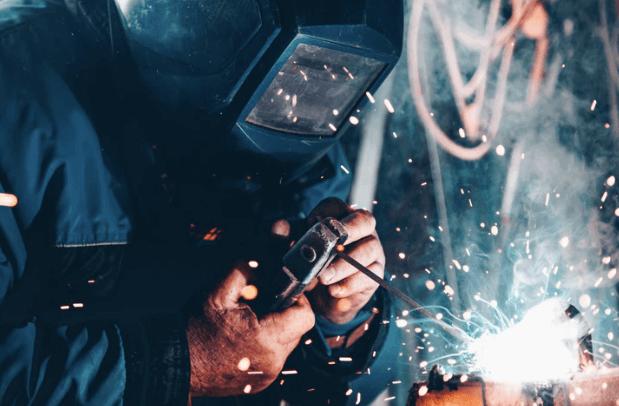How To Cut Costs In a Manufacturing Startup
For any manufacturing startup business, saving money and cutting costs is a top priority. It’s also quite tricky as the initial budget is already tight. Any opportunity that can make operations more cost-effective is more than welcome.
Startups can learn a lot from well-established companies. They know how to incorporate small cutting efforts in several departments that eventually add up to substantial savings.
Long gone are the days when manufacturing startups didn’t stand a chance against large companies. Times are a-changing and with the Internet and rapid technological developments.
Smaller business ventures can also benefit from the available practices and opportunities. Here are several cost-cutting ideas that any manufacturing startup, regardless of industry, can use to save money and increase efficiency.
Budget Planning & Priorities
Detailed and careful planning is probably the most realistic approach you can take when you’re starting your business.
The first step should be making a thorough assessment and a detailed analysis of all components, starting with the available budget to the expected outcome and return on investment.
By doing so, you set yourself up for a successful long-term operation.
After the initial assessment, you need to prioritize the results. One of the mistakes frequently made by manufacturers is to go years without conducting a comprehensive audit.
This usually leads to outdated technologies and procedures, plus a lot of money wasted in the process. What is obviously necessary at that point is an objective approach to prioritization.
Minimal Cash Expenses
Most startups work with a fixed and limited budget. The choice to invest the entire initial capital in the business presents an enormous risk. The reason for this is the fact that startups need liquid funds to keep the production going.
Fortunately, there’s a quite affordable option left and that is to outsource services. Large sums of money can be saved by having your goods produced elsewhere at a fraction of the cost.
Surely, there’s the option of keeping the production in-house, especially if you’re dealing with high-tech products. In this case, the best way to cut costs is to focus on the value of machinery.
Capital is limited and it’s not feasible to purchase new machinery or equipment. The best option is to purchase used machines and keep them in good condition.
Skilled Staff
Every business needs a solid base of skilled workers and they come at a high price. If you choose to outsource them, you can get by quite cheaply.
Finding and hiring in-house staff is extremely time-consuming and expensive. Outsourcing agencies guarantee high quality manufactured goods to the startup and already have highly experienced and skilled staff.
Taking this route will leave your business with more available capital to invest in other lucrative opportunities.
Production Facility, Storage & Offices
To house their production process and offices, startup companies usually look to buy or rent the facilities, preferably those from the similar industry as they might come with some used equipment. This can significantly cut time and cost to set up a business.
However, the idea of building your own factory is no longer as expensive and time-consuming as it used to be.
Nowadays, there are ways to streamline and customize the construction process by opting for affordable precast concrete panels. They are preferred for construction because they require low maintenance and are molded to fit any design.
The combination of these precast concrete panels with structural steel enables massive time and cost savings reduces the amount of waste and clutter, which improves the safety of the working environment.
When it comes to storage requirements, manufacturing startups should look into versatile modular solutions that can be expanded as their business grows.
Contemporary pallet racking components offer exactly that: They can be easily adjusted to satisfy your storage needs and warehousing requirements.
Good Old Ideas & Practices
It’s not rare that cost-saving ideas get pushed into the background by more pertinent priorities, but those original ideas were not necessarily bad ideas.
Moreover, use already established standards to improve your practice – get your copy of the ISO 9001:2015 standards that are guiding principles for any manufacturing company focusing on improving system processes, customer satisfaction and providing consistent quality products.
Energy Efficiency
One of the largest expenses the manufacturing industry faces is energy consumption. Building design flaws and production organization lead to energy wastage.
With the increase of eco-awareness, building construction has shifted towards creating eco-friendly and sustainable objects as they not only improve energy efficiency but also contribute to higher levels of motivation and productivity.
Some of the ways to optimize energy use that can have a large impact on your company are regular HVAC maintenance.
Possible leaks, dust and dirt build-up in the system will additionally overload the system that leads to more power consumption.
You can easily compensate your energy conservation efforts by scheduling production process. If you shift your production decision-making from capacity-utilization to a demand-driven model, you’ll be able to scale back production during slow demand without compromising the output.
Smart Negotiating
Good and long-lasting business relationships with your suppliers and freight companies are crucial to your business success.
However, many startups fall into the beginner’s trap and accept the first price offered. As a manufacturer, make the most of your position and drive a harder bargain and renegotiate a more favorable rate.
However, be ready to cooperate, as the advantage goes to negotiators who collaborate and don’t compete.
By implementing some of the tips, your startup can be on the right track towards becoming a financially healthy, profitable and successful business.
The key lies in the balance, so while you cut costs and save money, bear in mind the importance of delivering a high-quality product. With these two strategies combined, your manufacturing startup will soon grow into a well-established and reputable business.




